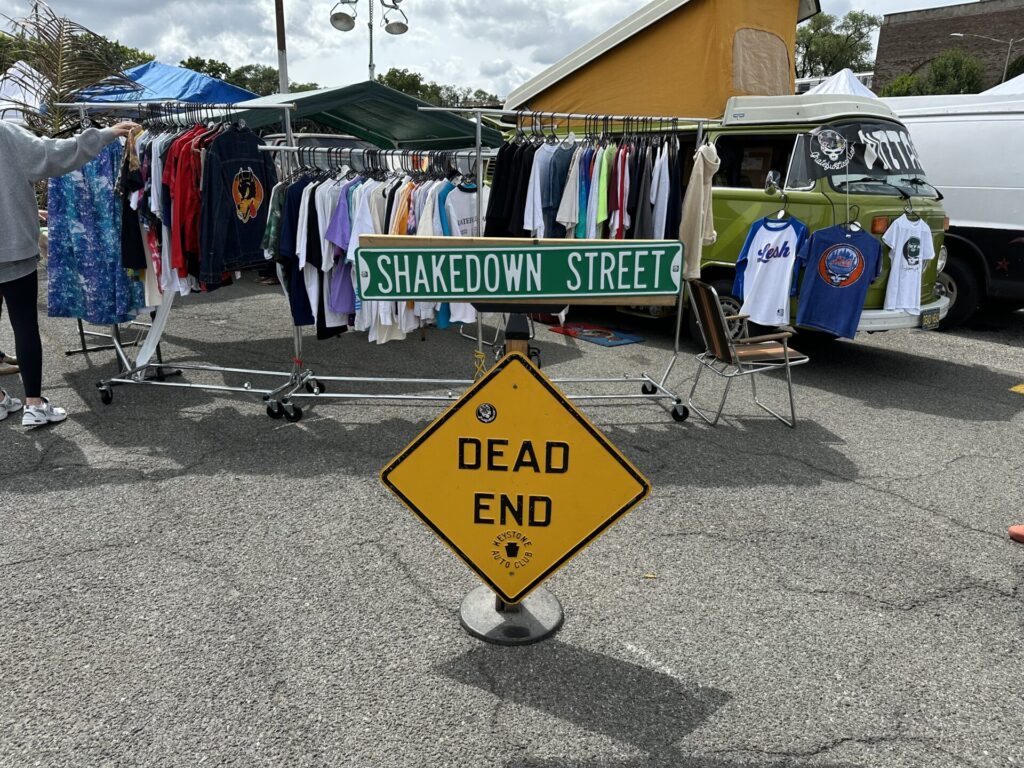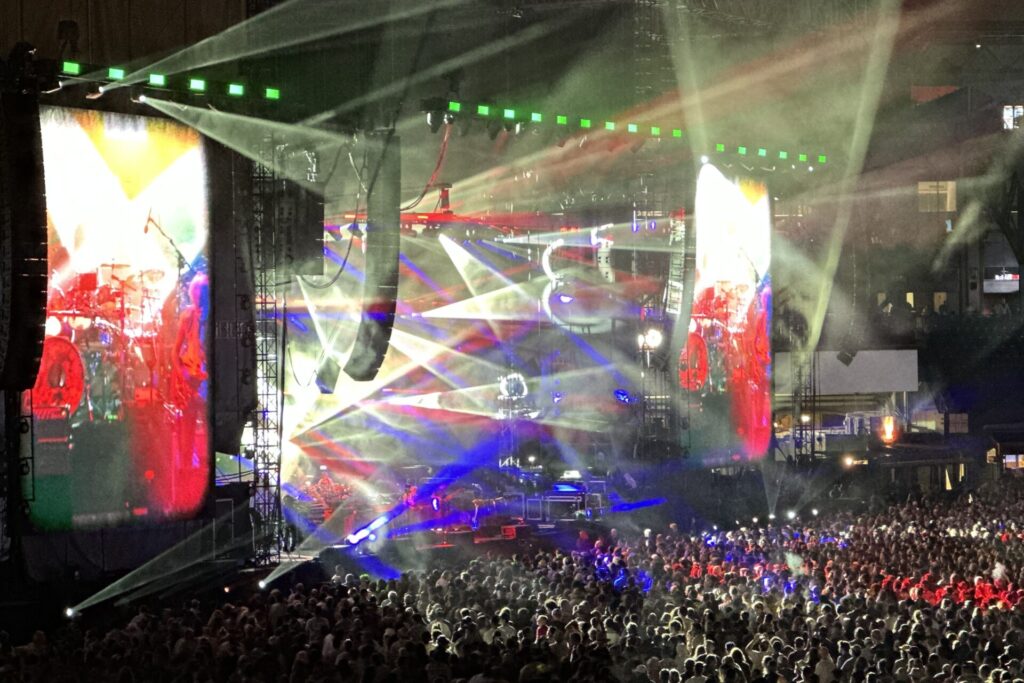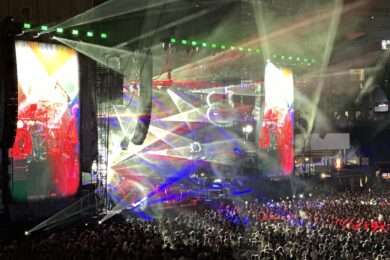In the row behind me, a couple of seats to my right, Geraldine couldn’t believe that I’d never seen Dead & Company before.
“Wow, really?”
“Nope.”
“This is, like, my eighth show this year.”
“God. And here’s me, a perfect virgin.”
It was a grey night at Citi Field, the home of the New York Mets. The summer solstice of 2023. Fifty thousand people in the stands, and on the field. In section 129, Geraldine struggled to comprehend my shortcomings.
“Wow,” she said. “That’s, like… incredible.”
To the majority of the band’s constituents gathered for the first of two house-full nights at this Major League ballpark, likely it was. On a campaign called ‘The Final Tour’, it seemed that every attendee had history, not just with this band, but with the Grateful Dead, the mother-ship from which they emerged. (The group, which features original Dead members Bob Weir and Mickey Hart, was formed in 2015 at the behest of John Mayer, who sings and plays lead guitar.) Geraldine had flown in to La Guardia, an airport so nearby that it seemed as if inbound planes were on a collision course with the centre field scoreboard, on a flight from Tennessee. Her husband didn’t “dig the Dead”, so she’d come alone. In the seats to my left, meanwhile, Tom and Miranda, a late middle-aged couple furtively toking on the first of many joints, were embarked on a road trip from southern New Jersey. After convening with Dead & Company here in Flushing, in Queens, they would head north for a two-night stand at Fenway Park, in Boston. In the past week or so, they’d already watched the band play in similarly vast spaces in Pennsylvania and upstate New York.
“This is what will happen,” Geraldine explained. “When the band come onstage, everyone in the seats will stand up for both sets. You know there’s two sets, right?” I did, yes. “Okay, good. So, the songs they play tonight will be completely different from whatever they play tomorrow.” Right. Training an index finger on a group of people on the fringes of the outfield, my new friend said, “Those guys down there are all on LSD. They’ll start dancing when the music starts and won’t stop until its time to go home. That’s their section for every show.”
Makes sense, I thought. Outside, in the thick outer-borough air, the parking lots surrounding Citi Field fizzed with an agreeable kind of lawlessness in which numerous tie-dyed strangers had offered to sell me magic mushrooms and LSD. Entrepreneurial youngsters were doing brisk business exchanging balloons filled with nitrous oxide for ten and twenty dollar bills. Wherever I looked, shit-faced people as old as my mother gambolled about the place.
“And, oh,” Geraldine concluded. “Apart from saying they’ll return after the break, at the end of the first set, the band won’t talk to the crowd.”
The scene that awaited me as I stepped off the graffiti-proof subway train at Mets-Willets Point station a good four hours earlier was unlike I’d ever seen. As a temporary resident of New York City, I’d gotten used to riding the 7 train out to the ‘burbs to see the luckless Mets toil in the name of entertainment for as little as four bucks a game. No problem there. But for the visit of Dead & Company, the battalions of blue and orange caps had been replaced by an invading army of fabulous furry freaks. They were Deadheads, ladies and gentlemen, the attentive and committed platoon who, from about 1971 onwards, followed the Grateful Dead, and now Dead & Company, from city to city, for year upon year. Quite how they make it work, I do not know. But no matter how hardcore a band’s audience may believe itself to be, this one is harder.
You might even think of it a resistance against an increasingly corporatized concert industry. As afternoon slipped into evening, beneath the subway platforms, thousands of people roamed the aisles of Shakedown Street, the informal bazaar comprised of many dozens of stalls erected in the shadow of all the group’s shows. Here, one could purchase verse written to order by a suited poet seated at an early Twentieth Century typewriter on a Formica-topped trestle table; five-dollar-beers from unlicensed vendors; edible marijuana; grilled cheese sandwiches; cocktails heavy on the Scotch and vodka; and hallucinogenics. Of the many scores of bootleg t-shirts on offer (all of which are sold with the group’s tacit consent) my favourite was a black number with the word “Mayer” fashioned in the style of a Slayer logo.

In its way, the world of me…




